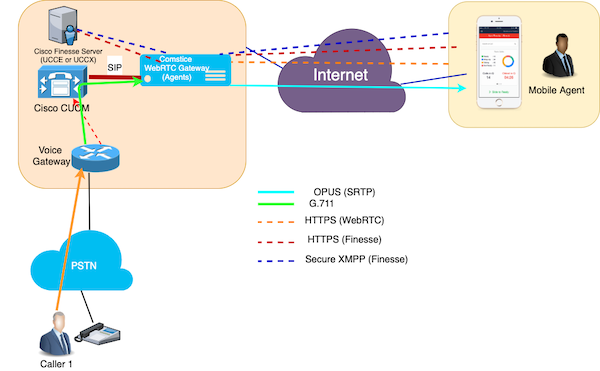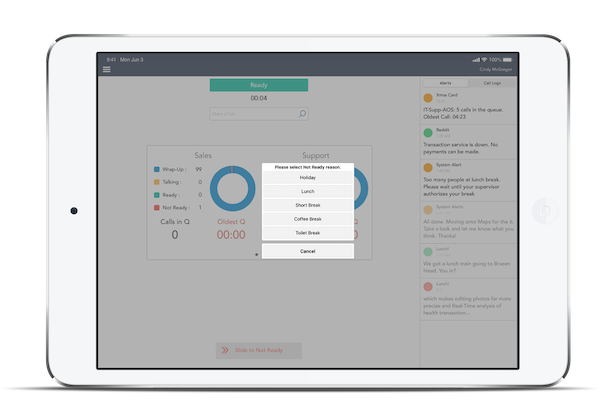
Cisco suggest mobile remote access solution for call center agents Comstice offers a WebRTC-based phone functionality on the web browser or using Comstice Softphone with no Cisco Expressway required. Comstice WebRTC Gateway simplifies the topology and helps to offer voice over data for the remote users with no VPN or a specialist firewall needed.
Comstice WebRTC Call Flow

Comstice Mobile Agent app utilizes Cisco Finesse REST APIs. It communicates with Cisco Finesse through Comstice Server on your network DMZ. Comstice Server acts as a proxy for HTTPS and XMPP traffic. So that, your Finesse clients can communicate with Cisco Finesse Service without opening any Finesse ports to the public Internet.
Comstice Mobile Agent app also includes a WebRTC-based softphone. Agents can receive customer calls through this phone, eliminating any Cisco Jabber or sophistocated firewall requirements. WebRTC uses OPUS codec and Comstice WebRTC Gateway transcodes OPUS with G.711 or G.723. Hardware and software transcoding resources can be used.
WebRTC signaling is through HTTPS and the audio is through secure RTP. Using a NAT configuration on your firewall, you can allow audio communication with Cisco CUCM and Comstice WebRTC softphones.

Comstice WebRTC Use Cases
Comstice WebRTC can be used by the remote users in various forms;
- Cisco CUCM enterprise users as a webphone via web browser
- Cisco CUCM enterprise users as a webphone via CRM; Salesforce, ServiceNow, Zendesk etc.
- Cisco CUCM enterprise users as a softphone via Comstice Softphone Desktop
- Cisco CUCM enterprise users as a mobile app using Comstice Mobile Agent app
- Cisco Contact Center agents as a webphone via Cisco Finesse web interface
- Cisco Contact Center agents as a softphone using Comstice Softphone Desktop
- Cisco Contact Center agents as a mobile app using Comstice Mobile Agent app